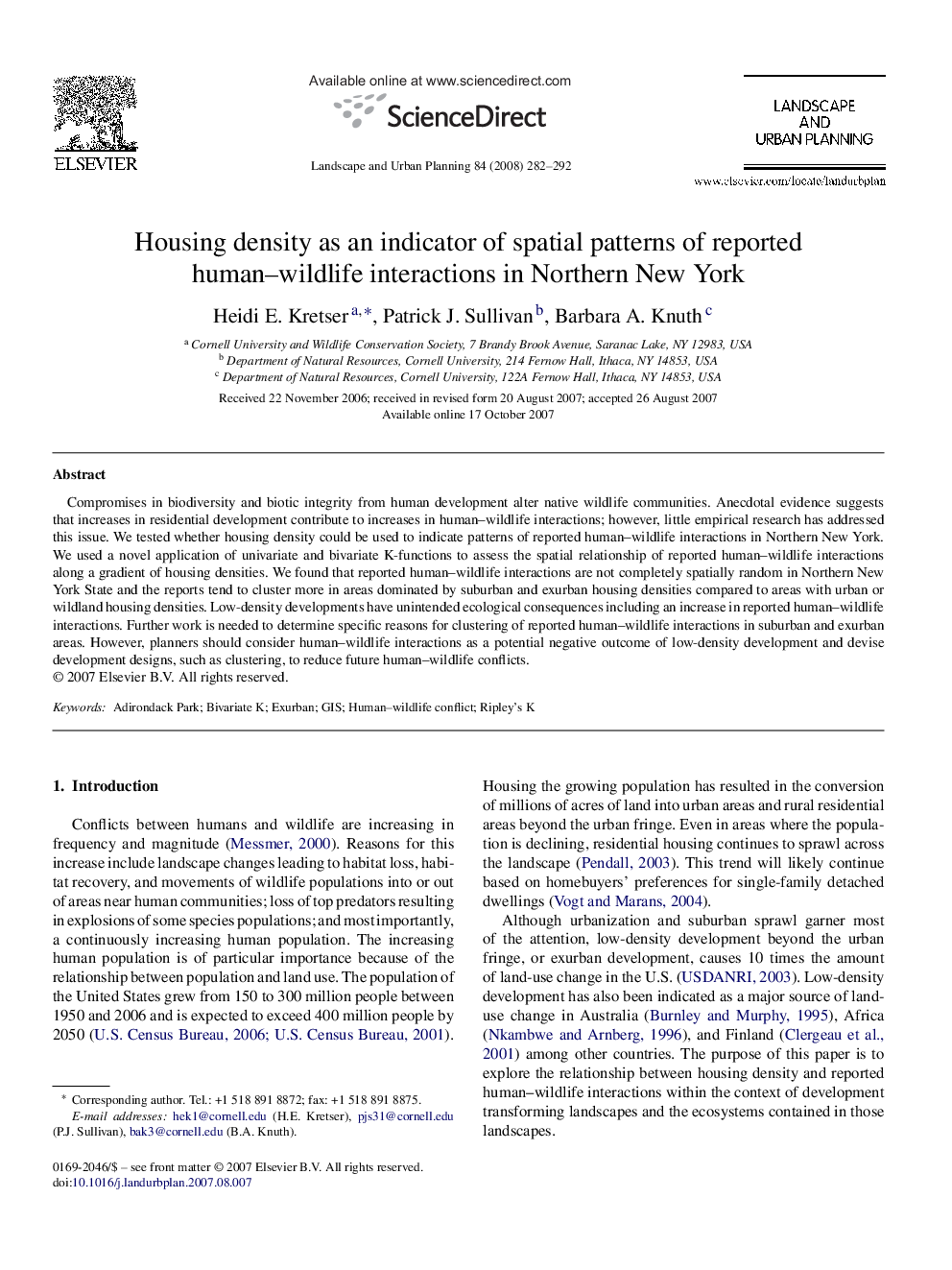| کد مقاله | کد نشریه | سال انتشار | مقاله انگلیسی | نسخه تمام متن |
|---|---|---|---|---|
| 1050156 | 1484668 | 2008 | 11 صفحه PDF | دانلود رایگان |

Compromises in biodiversity and biotic integrity from human development alter native wildlife communities. Anecdotal evidence suggests that increases in residential development contribute to increases in human–wildlife interactions; however, little empirical research has addressed this issue. We tested whether housing density could be used to indicate patterns of reported human–wildlife interactions in Northern New York. We used a novel application of univariate and bivariate K-functions to assess the spatial relationship of reported human–wildlife interactions along a gradient of housing densities. We found that reported human–wildlife interactions are not completely spatially random in Northern New York State and the reports tend to cluster more in areas dominated by suburban and exurban housing densities compared to areas with urban or wildland housing densities. Low-density developments have unintended ecological consequences including an increase in reported human–wildlife interactions. Further work is needed to determine specific reasons for clustering of reported human–wildlife interactions in suburban and exurban areas. However, planners should consider human–wildlife interactions as a potential negative outcome of low-density development and devise development designs, such as clustering, to reduce future human–wildlife conflicts.
Journal: Landscape and Urban Planning - Volume 84, Issues 3–4, 3 March 2008, Pages 282–292